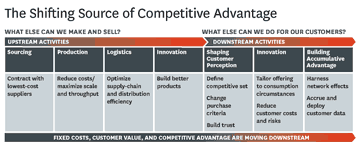June 26, 2013
Natural Google traffic makes up half of the traffic on the web. The runner up, direct traffic, doesn’t even come close, taking up only a fifth of the web traffic pie. There’s no question that growing your search engine traffic is one of the most promising ways to grow your online business.
But can you trust the people who claim they can grow that traffic source for you?
There are some real paragons in this industry, but if you aren’t careful, you could end up working with somebody that is taking advantage of you, or doesn’t really know what they’re doing. Here are five things a bad SEO consultant won’t tell you about what they do or their industry at large.
1. SEO is not a dark art that only the technical mind can comprehend
I believe all marketers should be data-driven, so technical knowledge of some kind should be a must in any field of marketing. But this isn’t really much truer for SEO than it is for any other field of marketing.
Some SEOs intentionally obfuscate their process and make the whole thing sound like it requires intimate knowledge of computer algorithms, and that they somehow hold the undisclosed secrets of top Google rankings.
Make no mistake, technical knowledge becomes massively important when you start talking about page load time, site architecture, responsive design, and so on. These do have tangential influence on SEO, and if you hire a consultant who can help with these issues you’ll be in much better shape.
Furthermore, an SEO who can design tools for your audience to use is more likely to earn you attention online than one who can’t.
But no SEO has intimate knowledge of exactly how Google’s algorithm works. Even a recently defected Google employee has no idea what the next algorithm update will bring.
All in all, SEO isn’t really a technical skill. Like all marketing, data plays an enormous part, and yes, those with web design experience will be more useful to you. But SEO is primarily about building online relationships and trust, attracting attention, and doing market research.
It’s not about hacking Google.
2. They’re probably violating Google’s guidelines
While SEOs do many things, most of that revolves around one of two central things: choosing keywords and building or attracting backlinks.
According to Google’s own guidelines, “Any links intended to manipulate a site’s ranking in Google search results may be considered part of a link scheme.” While Google more explicitly rules out spam-related techniques like buying links, excessive link trading, building websites just to build links, and using automated programs to build links, this doesn’t mean all other links are safe.
In fact, Google would like to see a web in which every link was given editorially and nobody manually built a link to their own site, ever.
This is never going to happen, but it does mean that any link an SEO consultant builds for you today can be called into question tomorrow.
Any time an SEO builds a link specifically to influence rankings, that “may be considered part of a link scheme.” There’s really no way around it. Most SEOs are violating Google’s guidelines. That’s a risk you need to be aware of.
This is not to say that SEOs should never build links, but it does mean that the practice needs to be approached very carefully. Only links defensible as legitimate marketing are really worth building.
If your SEO consultant is building links that don’t significantly boost brand impressions or send referral traffic, they are setting you up for failure at some point in the future. It’s not that you’ll be penalized for this (unlikely in any non-spam situation). It’s that you’ll essentially lose all the links and end up starting over from scratch.
This might not sound so bad now, but trust us, it’s a very painful process for the clients who have come to us after going through this exact process. Many of them believed that their links were “safe” because they were “hand built” and the content was “quality.” Unfortunately, all of these were just words, because the links still came from sites that had small audiences and lots of spammers. Now they need to rebuild their entire link graph from scratch, and find a way to deal with the huge cash flow disruption they’ve sleepwalked into.
SEOs who don’t take Google’s guidelines seriously and don’t diversify their traffic streams are just building a house of cards.
3. They don’t really know how to go viral
Viral marketing is a big hot button these days, and we’ve spent some time talking about whatmakes things go viral. I think it’s important to learn what you can about the subject and try to bring at least some viral component to every campaign. At the same time, nobody really knows how to go viral.
Browse the top posts of all time on Reddit and they don’t look particularly different from the stuff that does okay there every day. Look at any piece of viral content or meme and it’s virtually impossible to dissect why it worked instead of one of the many other creative ideas that failed.
We all know the description of a viral piece of content. On average, each person who sees it shares it with more than one other person who will also share it.
Easy to say. Almost impossible to pull off intentionally.
We’ve studied the subject and make an effort to learn from the science of shareability. People are more likely to share a piece of content if it makes them look better, it surprises them, it amuses them, it expands their view of the world, it’s emotional, and it’s actionable. It’s a good idea to work as much of this as you can into each piece of content.
But any marketing strategy built entirely around the concept of “going viral” is doomed to failure.
Just look at every viral video, meme, or piece of content you’ve ever come across. How many of them were put together by marketers?
I thought so.
We tend to focus on going “viral” with a lowercase “v.” It’s better to work on content that tends to get picked up by influencers in a particular niche and shared with their audiences. This is something that can be done consistently and that can be strengthened by relationships. There’s much less luck involved and the audience is far more relevant.
Keep in mind that even genuinely viral content tends to spread only through specific subcultures. Not even “Gangnam Style” got shared by everybody who saw it. There’s always a limit to who you’re willing to share a piece of content with, and the six degrees of separation are a myth.
4. If they’re doing it without you, they’re setting you up for failure
The core goal of any genuine SEO campaign is to establish you as a trusted authority on subjects that matter to your target audience. SEOs are experts in SEO, not your niche. They might not be lying if they claim that they can boost your rankings without you, but any results they can give you will be temporary, and the brand impressions probably aren’t going to be all that positive in the first place.
We’re certainly not saying that SEO doesn’t work unless your employees are the ones who write all the blog posts and build all the links. We’re just saying that if you care about how your customers perceive you and you want your search traffic to last, you’re going to spend a lot of time talking to your SEO consultant, brainstorming with them, advising them on the values you want to portray, defining your unique selling proposition, and so on.
Furthermore, the best SEO campaigns surround something you have done: a newsworthy event, case study, or piece of knowledge that isn’t widely known. Your SEO consultant can advise you on the kinds of newsworthy stunts you can pull off in order to maximize links. They can write blog posts, put together videos, and design infographics in a way that maximizes the exposure you can get from an event. But they can’t turn water into wine.
Online exposure revolves just as much around what you do as what you say. SEOs can only handle the “saying” part. It’s their expertise. But without the added benefit of your expertise, they can’t make you look like an expert.
5. They haven’t tested the validity of anything they say
This is one of the worst offenses.
Much of the SEO industry is run by followers. Don’t get me wrong; there’s nothing wrong with learning from the experts. But marketers who just parrot what leaders in their field talk about are only going to end up sleepwalking into traps, mistakes, and wasted time.
We mentioned before how important it is to be data-driven. You absolutely must put your opinions to the test if you have any desire to maximize results, especially when you put the word “optimizer” in your job title.
SEO is just as much art as science. There’s a lot of guesswork, and intuition plays a crucial role. It’s okay to venture into unexplored territory. That’s what discovery is all about. At the same time, you need to measure results and justify actions. There’s nothing wrong with hunches or beliefs. There is something very wrong with stating hunches and beliefs as facts, then proceeding to act on them indefinitely without testing their validity.
Conclusion
If you’re looking for an SEO consultant, or working with one, we hope this helps you ask the right questions. For the consultants in the audience, we’d love to hear if you think we said anything unfair, missed anything, and what resonates with you. Thanks for reading.
http://www.searchenginejournal.com/5-things-your-seo-consultant-wont-tell-you/65100/





